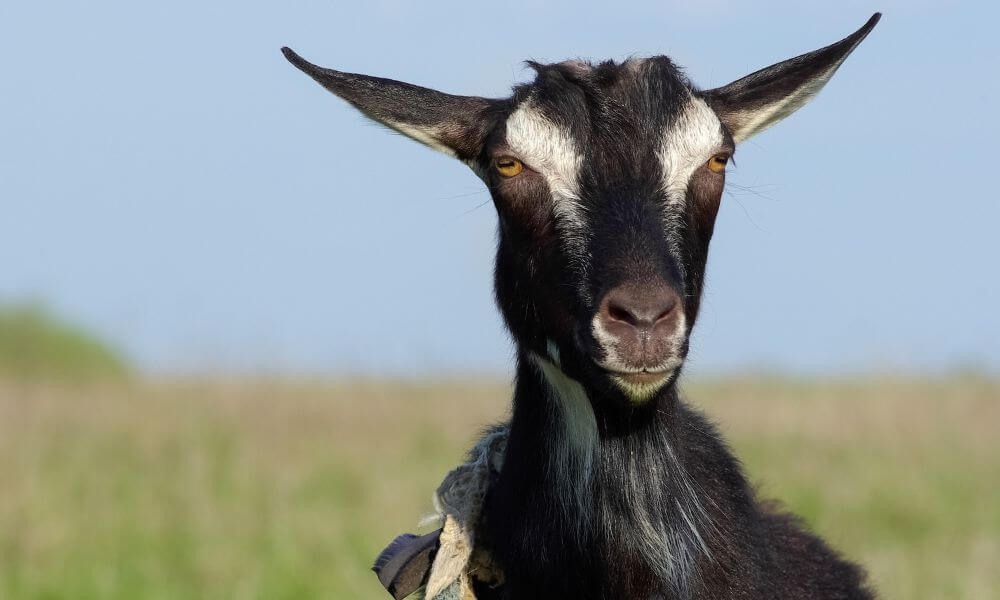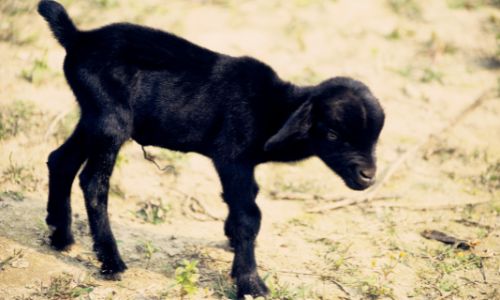What color we like our animals is a big point of personal preference.
Some might prefer many colors, in crazy and intricate patterns—some might prefer a simple, angelic, solid white color.
Others might prefer the dark, mysterious, solid black color that almost any domestic animal can come in nowadays.
This is just as true of goats as it is of any other animal.
If you want a black goat, then knowing which breed is right for you is really important.
So, with that said, let’s look at some of the most common varieties of black goats available today, and learn a bit about them.
Let’s get started.

LaMancha
First bred as recently as 1958, our first goat is native to the United States—Oregon, to be specific.
They have short ears, a straight face, and short hair.
They are average in size and weight, standing around 30 inches tall and about 150 pounds.
They are most commonly raised for milk production and were first recognized by the dairy association for this reason.
They are almost always black, though they do come in some other colors like brown and gold.
They are usually black, though.
Murciano Granadina
This goat originates from several regions in south eastern Spain, which explains its mouthful name. you can find it Almeria, Granada, Murcia and Alicante.
From Mexico, they were eventually introduced into the U.S.
They are of medium size, and have long, flowing ears that can even stand erect.
They are most commonly black in color, though they can also be found in brown and mahogany varieties.
Their milk is high in fat and protein, though they are also sometimes used for meat production.
Black Bengal

Originally from Bengal, this breed now can be found across north eastern India, from Oriss and Odisha to Bilhar and Bangladesh.
They are a very common variety bred for their meat.
They are highly docile, and love being around people.
Again, they are most commonly black, thus the name black Bengal.
They can also be found in other varieties of hue, though this probably implies the pedigree is not as pure.
Either way, they are fantastic goats to have around and make great companions.
Uzbek black
This breed, as the name suggests, was originally bred in Uzbekistan.
They were a by-product of another local breed, the Soviet Mohair.
They have long wool fibers covering their body, except along the spine, and they shed their wool in spring.
They are bred mostly for this luxurious fiber which can fetch a good price.
They are almost always black, and again, though they are found in other shades, this probably suggests they were not bred from pure Uzbek black stock.
Beetal
Another Indian goat found in the Punjab region, which also includes parts of Pakistan, they are bred both as meat and milk goats.
They tend to be a bit smaller than other breeds, making them great companions to have around.
They are usually black, too, with long ears and twisty horns.
They do come in other shades, too, though much less commonly.
Anatolian black
Anatolia was a historical region that is now dominated by modern Turkey.
Many breeds of goat originated from this region, in many ways the cradle of human civilization.
They are known by many names today, which is a result of their long history.
They are of average size, 30 to 40 inches tall and around 150 pounds.
They have long, dropping ears, and are most commonly found in black shades.
They are raised for milk, meat, and wool, but are great companions, too.
Australian Melaan
The exact origin of this breed is also a matter of debate, but it is certain they were first bred in Australia.
They are one of the most common and popular breeds in Australia today, and are very hardy.
They are also very intelligent and friendly.
They are most usually black, with short, glossy hair.
They have a strong and well-built frame and can be found throughout Australia.
Marwari
Another Indian variety, the Marwari were originally bred in the Marwar region of Rajasthan.
They are found throughout India today, taking on many purposes but mostly being used as a milk breed.
They are quite a bit smaller than other breeds, so produce less meat—they are, nonetheless, a dual-purpose breed.
They are mostly black, though they can have markings of other colors.
They are extremely resistant to disease and infection.
Zhiwulin
Moving north to China, we have the Zhiwulin breed.
They are bred as fiber goats, as they yield high-quality cashmere fur which can be sold for a massive profit.
They are also bred for meat, though, and stand around the size of an average goat.
Their horns are white and curve backwards.
Their fur is black and they are favored for those looking for black cashmere material.
They are certainly a more exotic breed, so chances are you’ll have a hard time getting hold of any for your homestead.
It’s worth a try, though!
Here we have goats of all shapes and sizes from all across the world, with one thing in common: their jet-black hue.
Black goats are really common throughout the world, and there is even plenty of advantage to having a black coat.
If you’re in the market to add a black goat to your homestead, any of these could be the right option for you.
